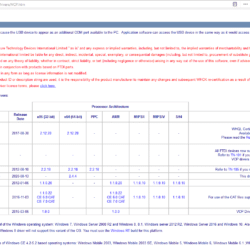Forum Replies Created
-
AuthorPosts
-
I didn’t read through this in its entirety, but here’s something to start: https://randomnerdtutorials.com/get-change-esp32-esp8266-mac-address-arduino/
To use ModularSensors to publish to a new endpoint, the “best” way to do it would be to create a new publisher, set the format there, and push it to the library. There is documentation on how the ModularSensors library works here: https://envirodiy.github.io/ModularSensors/index.html
As far as posting to SQL, you can’t do that directly, at least not that I’m aware of. There’s not a way to send a raw SQL query over TCP-IP. Generally, you would use HTML on top of TCP to send a post request to a HTTP server which will make the SQL query via a PHP script. You have to set up that in-between step. TinyGSM, which ModularSensors uses under the hood for all internet connection, only creates the TCP link. If you look again at the EnviroDIYPublisher.cpp, you’ll see that the HTML POST request format for MonitorMW is all created manually there.
I’m sorry, I hope that that’s not too much alphabet soup for you to follow.
2020-12-04 at 3:09 PM in reply to: Campbell Scientific CS-215 SDI-12 communication issues w/ Mayfly #14878I *finally* incorporated this when adding support for an InSitu RDO PRO-X. I started working on it and it took me a while to find where I’d talked about it before.
@ckillen – That is awesome, and not too spendy either.
Yay!
2020-11-16 at 2:49 PM in reply to: DFRobot Gravity KIT0139 Depth Sensor – Routine Interference? #14839Those temperature shouldn’t be a problem. If I remember right, one of our first box iterations ended up acting like a little greenhouse and turning into an oven in the summer.
Could it be the amp-to-volt board that’s the problem instead of the sensor? Do you have a second one you could test against?
The install guide for windows 10 is here: https://www.ftdichip.com/Support/Documents/InstallGuides/AN_396%20FTDI%20Drivers%20Installation%20Guide%20for%20Windows%2010.pdf Look at section 3.3 starting on page 9.
Remember that you need to be a computer administrator. If you’re using a school/work laptop that you don’t have admin privileges for, you won’t be able to do it.
You absolutely must have administrative privileges to install drivers on Windows. If you don’t, it might be the reason they failed to install with the Arduino program.
The “setup executable” linked in the comment column is probably the easiest way to install the drivers. There is also a link to an installation guide there. I’ve added screenshot.
Attachments:
You need the VCP (virtual com port) drivers. Scroll down just a little bit on the center of the page I linked and you should see a chart of operating systems and processor architectures. Pick the one that matches your system. If you’re running Windows and your computer isn’t terribly old, you probably have “x64 (64-bit)”. If you’re not sure, instructions for checking are here: https://support.microsoft.com/en-us/windows/32-bit-and-64-bit-windows-frequently-asked-questions-c6ca9541-8dce-4d48-0415-94a3faa2e13d
I think many macs have the FTDI drivers pre-installed.
The drivers are available here: https://www.ftdichip.com/Drivers/VCP.htm
-
AuthorPosts

 Welcome to EnviroDIY, a community for do-it-yourself environmental science and monitoring. EnviroDIY is part of
Welcome to EnviroDIY, a community for do-it-yourself environmental science and monitoring. EnviroDIY is part of 